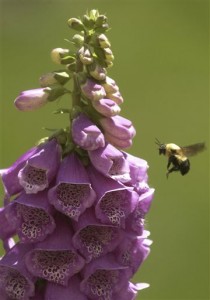
Peter Lassig not only talked to flowers, he humanized them.
Daffodils are quarrelsome, said the longtime lead gardener for LDS Temple Square’s celebrated grounds in downtown Salt Lake City. If you don’t plant those spring blooms properly, they fight with one another — and with the tulips.
Lassig, who died at age 77, reasoned that plants, like people, need to be understood and cherished for who they are, not for what you want them to be.
“Tulips are prissy ballerinas all lined up on stage; daffodils are like girls in calico, holding hands and dancing through a meadow,” he often said, “and hyacinths are like Russian soldiers with their tall hats and bayonets and falling all over each other.”
Lassig was “a lovable, eccentric genius,” said Paul Anderson, an architect and a retired curator at Brigham Young University’s Museum of Art. “He had an intuitive feeling for gardens.”
Lassig, who was born in Salt Lake City in 1938, was drawn inexorably to the famous square as an 18-year-old, volunteering to weed and perform other odd jobs. He maintained his interest while serving a Mormon mission in the Far East, then asked and received permission to remain, after his two years were up, to tour the renowned Kyoto Gardens and study those techniques.
The future designer earned a bachelor’s degree in horticulture from BYU and completed three years of graduate work in landscape design at Utah State University, all the while apprenticing at properties owned by The Church of Jesus Christ of Latter-day Saints.
He managed the gardens at the Mormon Pavilion at the New York World’s Fair in the 1960s. Then, in the early 1970s, Lassig got a call from then-LDS Church President David O. McKay, naming him the head gardener for Temple Square, a position he would hold until retiring more than three decades later.
In the past, the flowers on the prized property were arranged to spell out “LDS” or the Boy Scout symbol or were lined up in rigid rows as a formal English garden.
Plants don’t always cooperate, though. They died, leaving gaps of color, or those stubborn daffodils refused to stay in line.

So, as the number and variety of plants in the signature space soared from 22,000 to 165,000, Lassig pioneered a “skeleton, tendon and flesh” approach that gardeners across the globe emulate.
If a “sick plant” dies, he said in an oral interview with the LDS Church, “neighboring plants … are perfectly willing to occupy this vacancy.”
Lassig also helped plan landscapes at several Mormon temples and led the renewal of the church’s “Sacred Grove” in upstate New York, considered the faith’s birthplace.
He oversaw the army of volunteers it took to manage all the planting and pruning, weeding and watering. He also supervised the expansion and design of Christmas lights on Temple Square, creating a winter wonderland that attracts hordes of viewers every December.
Sometimes the master gardener had to argue with Mormon bureaucrats. In 1949, the church had planted a cedar of Lebanon seedling, which grew on Temple Square into a large, sturdy tree, near the south entrance. After a harsh winter, the tree was sliced in half by ice sliding off a roof.
To Lassig, though, “it (still) was beautiful and noble.”
Then construction jeopardized the tree.
“I promised to go to The Salt Lake Tribune,” he said in an oral interview, “and get them to photograph the little old ladies laying in front of the bulldozers with me.”
The threat worked. The tree was saved.
Lassig hired Esther Truitt Henrichsen, the first woman to work the grounds of Temple Square. He guided her as she pursued more education in landscape design.
Henrichsen, now the garden designer at Lehi’s Thanksgiving Point, worked alongside him for years and is finishing a book about his techniques.
But Henrichsen was scarcely alone in her estimation of Lassig as an exceptional teacher.

“Every year, he taught a design course in the big room under the Tabernacle. Hundreds were his students in what he called ‘The February Design Course,’ ” she said, “a good time to have a class because most gardeners are not gardening in February.”
Lassig mentored hundreds, maybe thousands, she said. “He couldn’t even finish his own garden, he was so busy helping others.”
Lassig served as a Mormon bishop and longtime Scout leader, all the while nurturing the eight children whom he had with his first wife, Sylvia, who died in 1991, and five more with his second wife, Janet.
Scores of friends and family already have sojourned to Utah to pay their respects to a man who planted in them a passion for the explosive cacophony of color, variety and fragrance found in nature.
“He was,” Henrichsen said, “much beloved.”
His funeral was held at the Rose Park LDS Stake Center in Salt Lake City.




